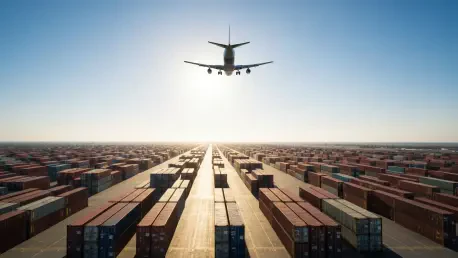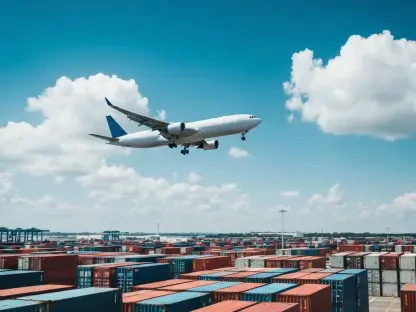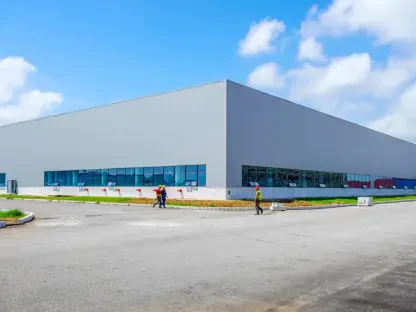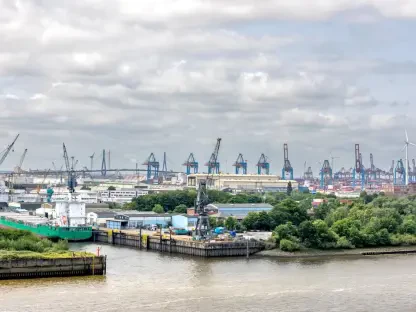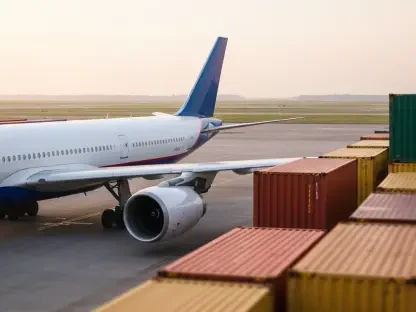I’m thrilled to sit down with Rohit Laila, a veteran in the logistics industry with decades of experience in supply chain and delivery. Rohit’s deep knowledge and passion for technology and innovation in the sector make him the perfect person to shed light on the remarkable developments at East Midlands Airport, a key player in the UK’s air cargo landscape. In this conversation, we dive into the airport’s impressive cargo growth, the strategies behind handling peak season demands, the influx of new airlines, ambitious long-term development plans, and the infrastructure upgrades fueling this transformation.
Can you walk us through the factors driving the 11.4% increase in cargo volumes at East Midlands Airport from May to October?
Absolutely. The 11.4% growth, which translates to nearly 240,000 tonnes of cargo handled, is a result of several converging factors. First, there’s been a surge in global demand for air freight, especially for e-commerce goods, which has been a massive driver. Additionally, the airport’s strategic location in the heart of the UK, combined with its 24/7 operations, makes it a go-to hub for logistics companies. The arrival of six new cargo airlines since May has also played a huge role in boosting capacity and attracting more business. It’s really a perfect storm of location, timing, and partnerships.
How does this year’s cargo volume stack up against historical trends at the airport, beyond just last year’s numbers?
Compared to a few years back, the nearly 240,000 tonnes handled this year between May and October is a significant leap. If we look at pre-pandemic figures, for instance, the volumes were often closer to 200,000 tonnes for a similar period. The steady recovery of global trade, coupled with the airport’s focus on expanding cargo operations, has pushed these numbers well beyond historical averages. It’s a testament to how East Midlands Airport is positioning itself as a critical node in international logistics.
With a 63% increase in cargo flight movements expected during the peak season, how is the airport gearing up for high-demand events like Black Friday and the pre-Christmas rush?
Peak season is always a challenge, but we’re ready for it. The expected 63% spike in flight movements means we’ve had to ramp up coordination with airlines and ground handlers to ensure smooth operations. We’ve been working on optimizing schedules to avoid bottlenecks, increasing staff presence during critical hours, and ensuring our infrastructure—like additional widebody aircraft stands—is fully utilized. It’s all about anticipating the surge, especially for time-sensitive e-commerce shipments around Black Friday and Cyber Monday, and making sure delays are minimized.
What are some of the biggest challenges you anticipate during this busy period, and how do you plan to address them?
One of the main challenges is managing the sheer volume of flights and cargo in a compressed timeframe. Weather disruptions can also throw a wrench in the works during winter months. To tackle this, we’ve got contingency plans in place, like flexible slot allocations for flights and enhanced communication with all stakeholders to reroute or reschedule if needed. We’re also leveraging technology for real-time tracking and updates to keep everything flowing as smoothly as possible. It’s about staying proactive rather than reactive.
The airport has welcomed six new cargo airlines since May. What do you think made East Midlands Airport so appealing to these carriers?
I think it boils down to a few key strengths. Our central location in the UK offers unparalleled access to major road networks, which is crucial for last-mile delivery. The 24/7 operational capability is another big draw—there are no curfews or slot restrictions like at some other airports. Plus, our dedicated focus on freighter operations and the recent infrastructure upgrades signal to airlines that we’re serious about cargo. These factors combined create a compelling case for carriers looking to expand or establish a presence in the UK.
Can you share any insights about the seventh cargo airline expected to join the airport soon?
While I can’t reveal specifics just yet, I can say that discussions are in advanced stages with a carrier that aligns well with our vision for growth. They’re looking at the potential for both capacity and connectivity that East Midlands offers. We’re excited about what this partnership could bring in terms of new routes and further volume increases. Stay tuned for an official announcement in the near future.
How have these new airlines contributed to the overall growth in cargo volumes at the airport?
The impact has been substantial. Each new airline brings additional capacity and often taps into new markets or trade lanes, which directly boosts the tonnage we handle. For instance, since May, the diversity of goods and destinations has expanded, ranging from perishable items to high-value tech products. Their presence has also created a ripple effect, attracting more business from shippers who want access to these networks. It’s a cycle of growth that benefits everyone involved.
Let’s dive into the cargo development plans launched in May. What are the core objectives of the plan to handle 583,000 tonnes by 2043?
The primary goal is to future-proof our cargo operations to meet a projected 54% increase in demand over the next two decades. We’re aiming to scale up from the current 400,000 tonnes annually to 583,000 tonnes by 2043. This involves not just increasing capacity but also enhancing efficiency through better infrastructure, technology, and partnerships. It’s about building a sustainable model that supports long-term growth while maintaining our reputation for reliability in the logistics sector.
How do the four plots near the runway, totaling 50 hectares, play into this long-term vision for cargo growth?
Those four plots are a cornerstone of our expansion strategy. Spanning 50 hectares close to the runway, they provide prime real estate for developing state-of-the-art cargo facilities, warehouses, and logistics hubs. This proximity to the runway cuts down on turnaround times, which is critical for air freight. We envision these areas becoming a bustling center for cargo operations, supporting everything from storage to rapid processing, and ultimately helping us achieve our volume targets.
What kind of economic ripple effects do you expect from this development, especially with projections of 21,000 jobs and a nearly £4 billion boost?
The economic impact could be transformative for the region. Creating over 21,000 jobs means opportunities across a wide range of roles, from logistics and warehousing to tech and management. That’s a huge boon for local communities. The nearly £4 billion economic boost reflects not just direct revenue from cargo operations but also the indirect benefits—think increased business for local suppliers, improved infrastructure, and a stronger regional economy. It positions the Midlands as a global logistics powerhouse.
On the topic of recent upgrades, how have larger facilities for companies like Swissport and FedEx supported the rising cargo demand?
Moving Swissport and FedEx into larger premises has been a game-changer. These expanded facilities allow them to handle greater volumes of cargo with improved efficiency. More space means they can process shipments faster, store more goods on-site, and scale operations during peak times. It’s a direct response to the rising demand we’ve seen, ensuring that ground handling and logistics keep pace with the influx of flights and tonnage.
How have the additional widebody aircraft stands improved cargo flight operations at the airport?
The extra widebody stands have significantly enhanced our capacity to accommodate larger cargo aircraft, which are critical for handling high-volume shipments. Before, we were sometimes constrained by parking availability, leading to delays. Now, we can manage more simultaneous arrivals and departures, which improves turnaround times and overall operational flow. It’s a vital piece of infrastructure that supports both current growth and future expansion.
What is your forecast for the future of cargo operations at East Midlands Airport over the next decade?
I’m very optimistic about the next ten years. With our development plans in full swing, I foresee East Midlands Airport solidifying its position as the UK’s leading dedicated cargo hub. We’ll likely see continued growth in volumes, driven by e-commerce and global trade, alongside advancements in technology that streamline operations. The addition of more airlines and infrastructure will keep us competitive, and I expect our economic contributions to the region to grow exponentially. It’s an exciting time to be part of this transformation.
